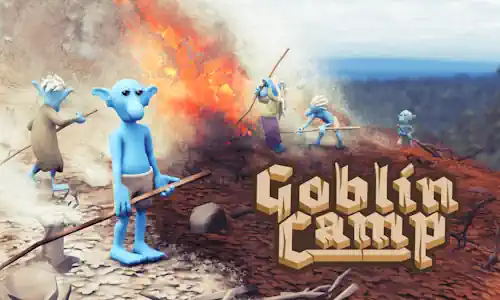The Trouble with the Kalevala
Shall I bring these songs together From the cold and frost collect them? Shall I bring this nest of boxes, Keepers of these golden legends, To the table in my cabin, Underneath the painted rafters, In this house renowned and ancient?
- the Kalevala, proem, trans. John Martin Crawford (1887)
The Kalevala is a work of poetry by Elias Lönnrot, often referred to as Finland’s national epic. We use quite a few quotes from John Martin Crawford’s translation of the Kalevala in Goblin Camp as flavor text. Finland celebrates Kalevala Day every year on February 28th. But what is the Kalevala, exactly, and what’s the problem with it?
Finnish nationalism was born in the 19th century, after what is now Finland became part of the Russian empire. Inspired by the romanticism and nationalism sweeping through Europe, some intellectuals in Finland believed that Finns were also a nation with a common culture and heritage. One of these nationalists was a doctor called Elias Lönnrot (1802–1884), who set out to collect oral poetry and folklore in Finland and Karelia. Lönnrot was inspired by works like the Scot James MacPherson’s (1736–1796) Ossian cycle (1761–63), epic poetry supposedly translated from Gaelic, and Grimm’s Fairy Tales (1812–1858), a collection of German folk tales.
In 1828, Lönnrot made his first trip around the grand duchy of Finland, collecting poems and songs. Over several years, he traveled both in Finland and adjoining White (Viena) Karelia, hearing both Finnish- and Karelian-speakers. Lönnrot started publishing the poems in 1833. The first Kalevala was completed in 1835, and the definitive New Kalevala in 1849; these days, Kalevala refers to the latter.
Lönnrot didn’t simply write down the poems and songs he heard, but he edited them heavily and assembled them into an epic. His ultimate inspiration was the ancient Greek Iliad and Odyssey, and he wanted Finland to have a similar epic poem. So Lönnrot shaped the material he had into a more or less coherent story, which we now know as the Kalevala: the creation of the world, the various heroes trying to get married, the theft of the Sampo from the North-land, and so on, culminating in the arrival of Christianity and Väinämöinen’s departure. This epic structure is almost entirely Lönnrot’s invention: he made the poems fit his story, and wrote it as a national epic for Finnish-speaking Finns, and this is how the Kalevala is usually presented today. This is the Kalevala that went on to inspire authors like J.R.R. Tolkien.
In some ways, the Kalevala does preserve interesting details from a possibly even distant past. As I mentioned earlier, several episodes in the Kalevala are considered by researchers to be representations of shamanism. It’s been pointed out that while the Kalevala talks about flax, the actual methods given for handling the plant actually make more sense if it was hemp. So in some ways, the poetry collected into the Kalevala can actually tell us about past Finnic cultures. But these remnants are fairly few; the oral poetry was a living tradition that was constantly updated, not a time capsule from the past.
However, it’s clear that there are two major problems with the Kalevala. The first is that because Lönnrot hammered the material into a form that he invented himself, including heavily editing the original poetry, it’s not at all clear that the Kalevala actually ends up representing anything other than Lönnrot’s imagination. Lönnrot wanted a national epic, a Finnish Iliad, and he got it. But it’s his creation, rather than something he “found”.
The other problem is that while the Kalevala includes material from Western and Eastern Finland, Lönnrot himself said that the majority of the poetry comes from Karelia. While it’s true that Karelia and Finland belong to the same broader Finnic culture and poetic tradition, Karelian is a language related to Finnish, but mutually unintelligible with it and not to be confused with the Karelian dialect of Finnish. Karelian culture is separate from Finnish, both geographically and historically. So Lönnrot took a whole lot of Karelian poetry, translated it into Finnish, and passed it off as a “Finnish” national epic. This is what leads some Karelian activists to say that the Kalevala was stolen from the Karelians.
What makes this worse is that the attitude Finns have had to Karelians, and other related peoples to the east and south, has often been at best paternalistic, at worst colonial. Finnish nationalists have seen peoples like the Karelians as Finns, but more primitive: therefore their customs and culture are thought to have preserved older features of broader Finno-Ugric culture, but because they’re sort of primitive proto-Finns, their rights don’t need to be respected. This attitude was taken to worrying extremes during the Second World War, when Finland occupied East Karelia: the occupation administration tried to wipe out Karelian language and culture, and assimilate the Karelians into Finland. This background has to be kept in mind when talking about the relationship between the Kalevala and Karelian culture, and Finns and Karelians in general.
So where does this leave the Kalevala today? It’s definitely questionable to claim that a work based largely on Karelian poetry is somehow a “Finnish” national epic, especially if Finnish means the currently existing Finnish state. Using the Kalevala, it’s important to be aware of this background. At the same time, the idea that the Kalevala is somehow an ancient story, or even collection of stories, that Lönnrot somehow discovered, is just not true.
One way of looking at this is to treat the Kalevala as essentially a work of fiction by Elias Lönnrot, based heavily on Finnish and especially Karelian oral poetry. That’s the spirit in which we quote the Kalevala in Goblin Camp: as an inspiration and an interesting source of background material, but one that has clear problems that we’re aware of.
